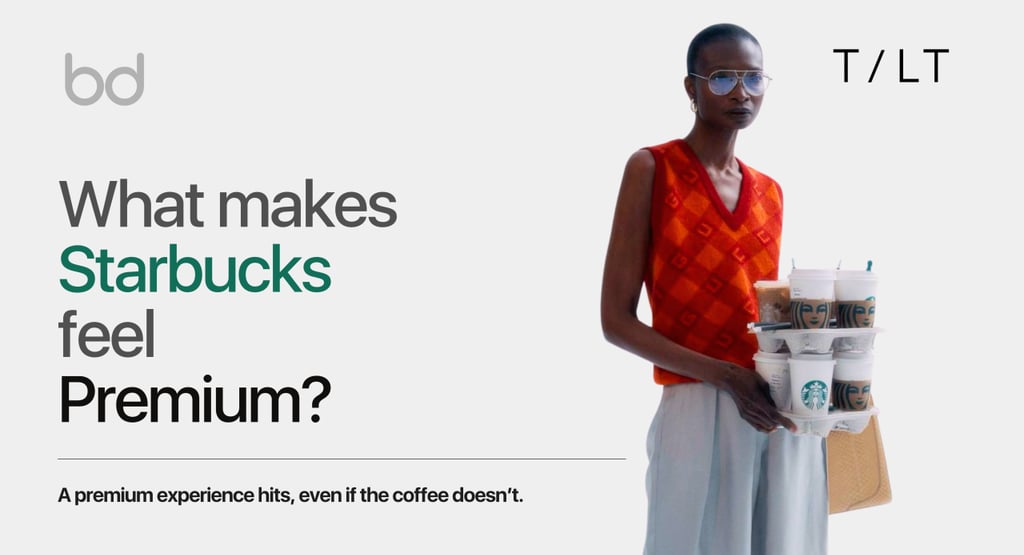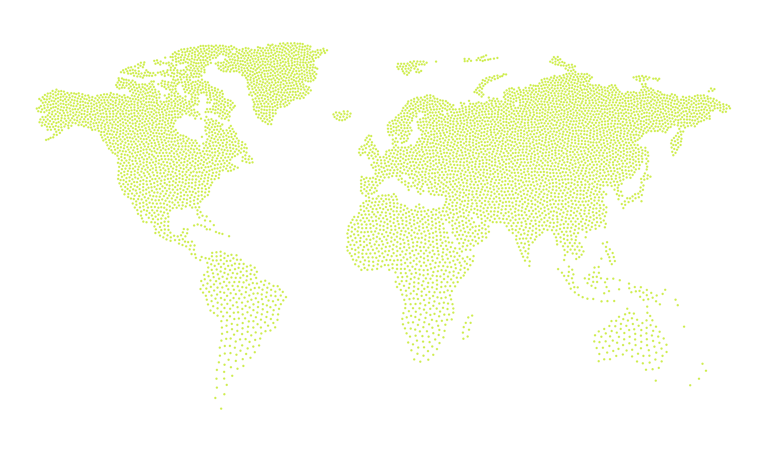What Makes Starbucks Feel Premium (Even If the Coffee Doesn’t)
So what makes Starbucks feel premium? The secret lies not in the bean but in the brand experience, a meticulously designed ecosystem that convinces you you're paying for more than just caffeine. In this breakdown, we explore the brand psychology, design systems, customer rituals, and identity signals that elevate Starbucks from a coffee chain to a lifestyle brand.
Brand Blinks Global
4 min read


Walk into any Starbucks around the world, and you’ll feel it: the curated playlist, the earthy wooden interiors, the barista writing your name on a cup. It all whispers “premium.” But let’s be honest, when it comes to the coffee itself, many would argue it’s not objectively better than your neighbourhood café or even your Nespresso machine. So what makes Starbucks feel premium?
The secret lies not in the bean but in the brand experience, a meticulously designed ecosystem that convinces you you're paying for more than just caffeine. In this breakdown, we explore the brand psychology, design systems, customer rituals, and identity signals that elevate Starbucks from a coffee chain to a lifestyle brand.
They Sell an Experience, Not Just Products
Starbucks doesn’t compete on coffee. It competes on comfort, consistency, and community.
+ Third Place Philosophy: From day one, Starbucks positioned itself as the “third place”, not home, not work, but a personal escape. This idea alone created a behavioural shift. You weren’t grabbing coffee. You were visiting Starbucks.
+ Seating, WiFi, Ambience: The smell of roasted beans, free WiFi, warm lighting, all designed to extend your stay and make Starbucks a “habitual destination,” not a transactional pitstop.
+ Personalisation Rituals: Whether you’re a “tall oat milk latte with an extra shot” or a “Frappuccino with no whip,” the brand celebrates your preferences. Writing your name on the cup makes it personal. Even if they spell it wrong, you feel seen.
This is intentional brand theatre. Every small touchpoint is crafted to feel human and luxurious, even if the coffee is standardised.
The Brand Visual Language is Calm, Clean & Global
Starbucks has never shouted for attention. Instead, it relies on calm, confident brand cues.
+ Muted Earth Tones & Minimalism: The colour palette leans on deep greens, soft whites, and warm browns, a subtle nod to nature and organic roots. No aggressive reds, no neon signage.
+ The Siren Logo: Iconic and mysterious. The logo has evolved but never lost its premium abstraction, no literal coffee cups, just symbolism.
+ Interior Consistency: Whether you’re in Tokyo or Toronto, you know what to expect: wooden textures, industrial-chic aesthetics, and a cosy ambience. This is a systemised premium design.
While smaller cafés change mood with every franchise owner, Starbucks gives you predictable sophistication.
Scarcity and Exclusivity, at Scale
A contradiction? Not really. Starbucks mastered the art of making mass-produced coffee feel unique through:
+ Seasonal Menus: Pumpkin Spice Latte isn’t just a flavour, it’s a cultural moment. Limited-time offers build excitement and FOMO.
+ Exclusive Rewards: Their app makes you feel like an insider. Stars, custom offers, exclusive merch; these gamify your loyalty and make regulars feel elite.
+ Localised Customisation: Japan gets Matcha Cream Frappuccino. India gets Masala Chai Tea. While the experience is global, the options feel locally tuned, giving customers a sense of being understood.
Starbucks feels both everywhere and personal, a rare combination in B2C retail.
It Taps Into Identity, Not Just Taste
Starbucks isn’t just coffee, it’s a social signal.
+ Lifestyle Association: Holding a Starbucks cup became synonymous with being busy, stylish, urban, and modern. It fits seamlessly with your MacBook, AirPods, and minimal backpack.
+ "I Deserve This" Psychology: Their pricing isn’t just about margins; it taps into a self-reward mechanism. Starbucks permits people to indulge, without the guilt of high-end luxury spending.
+ Millennial & Gen Z Magnetism: With sustainability messaging, custom drink hacks, and influencer-friendly aesthetics, Starbucks fits perfectly on an Instagram story or a TikTok “what I eat in a day” reel.
It’s no longer just a brand. It’s a badge, much like wearing Nike or driving a Tesla.
Consistency = Trust = Premium
The biggest branding mistake companies make? Thinking premium means expensive. For Starbucks, premium means predictable excellence.
+ Barista Training: They’re not just taught to make coffee, they’re trained to deliver experience. Warm greetings, name personalisation, memory of your last order, this emotional familiarity builds trust.
+ Menu Architecture: No overwhelming chaos. The menu is designed for discovery with clear hero products, seasonal callouts, and “insider” customisations.
+ Product Packaging: Even their cups are iconic. Limited-edition cup designs, clean typography, and green branding turn disposable coffee into a fashion accessory.
This operational discipline builds emotional safety. Customers know what they’ll get. Every single time.
Storytelling & Social Purpose
Premium brands often root themselves in a mission larger than the product. Starbucks does this by:
+ Ethical Sourcing: They speak often about fair-trade beans, eco-conscious sourcing, and support for farmers, especially in developing regions.
+ Sustainability Commitments: From reusable cups to carbon-neutral pledges, Starbucks attaches a bigger cause to your daily latte.
+ Community Impact: Their hiring practices (veterans, refugees, underserved youth) and in-store events position the brand as socially aware, not just profit-driven.
By aligning with values people care about, Starbucks transcends “corporate coffee” and becomes emotionally valuable.
So, Is the Coffee Really Premium?
Let’s face it: coffee purists often critique Starbucks for over-roasting, over-sweetening, or lacking nuance. But Starbucks doesn’t sell to purists. It sells to people who want:
+ Familiarity
+ Convenience
+ Customization
+ Comfort
+ Identity alignment
The coffee is consistent, and consistency feels premium in an unpredictable world.
Final Sip: What You Can Learn as a Brand
Starbucks is a masterclass in premium perception without product superiority. Here’s what any brand can take away:
+ Design your environment, not just your product
+ Emotional consistency > technical perfection
+ Turn customer habits into rituals
+ Invest in small signals that add up to status
+ Tie your brand to values, not just features
Premium is not always about quality. Sometimes, it’s about how you make people feel about what they’re buying.
And in that, Starbucks wins, one custom-labelled cup at a time.
Explore how we can sharpen your brand → Work Spotlight
© 2025 BRNDXMORPH Media Worldwide Private Limited. All rights reserved
Brand Blinks Global is an independent global brand consulting x transformation company.
The trademarks, logos, and service marks displayed on this site are the property of their respective owners.
"Brand Blinks Global," "Brand Blinks," "Made for the Uncommon," and the "bd" logo are trademarks or registered trademarks of BRNDXMORPH Media Worldwide Private Limited.
RESOURCES
INTELLIGENCE
BUSINESS
PARTNERSHIPS
COVERAGE
EXPLORE
Made for the Uncommon


When your brand grows, others rise too. 2% of your project empowers a nonprofit we back together every year.


